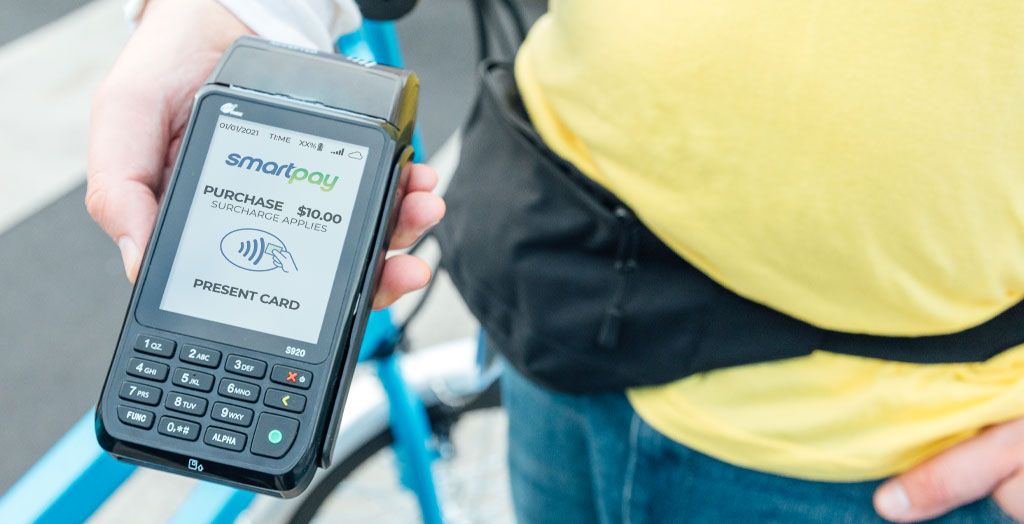
In line with the global growth in digital payments, Kiwi consumers are moving away from carrying and using cash, with a third of Kiwis ditching it completely.
To add to that, NZ has seen contactless payments become the number 1 payment method and consumers maximising their credit card reward schemes with more than half of Kiwis using their credit cards for day-to-day expenditure to build up benefits.
Due to this shift, businesses are processing significantly more card (and mobile) transactions than they did a few years ago, which also means they are potentially paying more in merchant service fees.
With contactless payments and credit card reward schemes becoming more popular, more Kiwi retailers are introducing a surcharge fee.
A surcharge fee can be a win-win for both New Zealand businesses and consumers. It can help keep things fair, allow small businesses to provide more choices, and keep costs down.
The growing overhead cost of accepting payments
In New Zealand, when a customer inserts or swipes a debit card, the processing cost of the transaction is included within the monthly network fee which the merchant pays. because it is an EFTPOS payment.
But for accepting a credit card or contactless payment, the merchant incurs additional processing fees. These fees are calculated as a percentage of the dollar value of the transaction, and can quickly add up to result in a fairly hefty business overhead paid out monthly to the banks as merchant service fees (MSF).
Given the popularity of these payment methods, Kiwi businesses are faced with making a decision when accepting payments from customers.
They can absorb these transaction fees by reducing their margins or pass on the cost by increasing prices or charging a fair and transparent surcharge.
What is a surcharge?
A surcharge is a small fee merchants can add to a customer’s bill to cover the cost of accepting certain payment methods.
Done right, surcharging is simple, transparent and fair to all. It can help to offset some of the bank fee overhead and create a better shopping experience for customers.
Why surcharging can benefit merchants and customers
✓ Surcharging can save a business thousands of dollars
Even though the cost for each transaction might seem low, you end up with a monthly MSF bill that can quickly add up to thousands of dollars over a financial year. You can offset these transaction fees from your business expenses by adding a surcharge.
✓ Surcharging can give your customers more choice
You can give customers the choice to pay with a credit card, or a variety of contactless methods such as payWave, Tap & Go, Apple Pay or Google Pay. Customers can still get their credit card rewards, but the cost won’t be coming out of your pocket. And those customers that no longer carry cards or cash will no longer walk out the door empty-handed.
✓ Surcharging encourages low-cost payment methods
While customers may prefer contactless or credit because of the benefits like convenience or rewards, as a merchant you will always be able to offer payment methods that don’t incur MSF fees (cash, EFTPOS & debit insert/swipe).
Either way, you get paid without accepting higher processing costs.
In addition, the possibility that a customer will choose a lower cost payment method (such as a debit card) when presented with a surcharge for reward scheme credit cards, helps put competitive pressure on card schemes to lower their fees.
✓ Surcharging allows for business growth and customer loyalty
Contactless payment is the #1 way Kiwis prefer to pay today. Surcharging can enable small businesses to accept this payment without hurting tight margins.
The savings you incur from surcharging can also be invested back into your business towards more staff, more inventory and more advertising – the options are endless.
Accepting contactless payments also makes you appear more flexible and future-proofs your business for technological advancements in the payments industry.
A survey by MasterCard shows merchants who accept contactless payments achieve at least double the growth rates of merchants who don’t. Contactless merchants also saw triple the growth rate in returning customers.
✓ Surcharging can be a win-win for your business
By introducing a surcharge on contactless payments, you provide a better customer experience, become more flexible to new payment methods, and your business remains on top of shifting consumer trends.
For customers that are happy to accept the surcharge, the payment will be quick, convenient and hassle-free. For customers that do not wish to accept the surcharge, they can simply insert or swipe their debit card – either way; you get the sale!
The bottom line is that surcharging allows you to offer the all important contactless and credit card options while eliminating your cost of acceptance.
If you want to learn more about how surcharging could help your business, talk to the Smartpay team today.